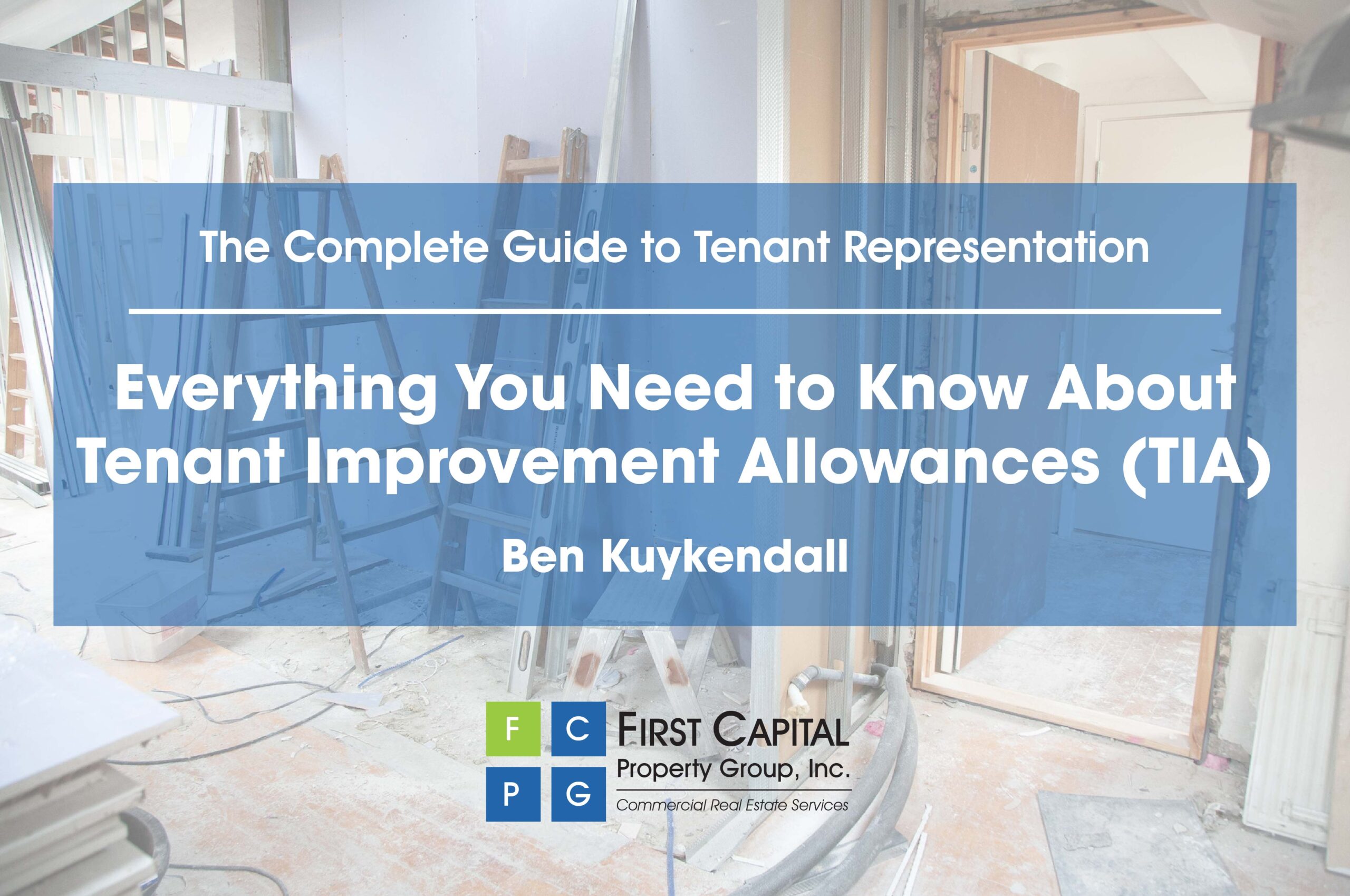
The Complete Guide to Tenant Representation
Everything You Need to Know About Tenant Improvement Allowances (TIA)
Ben Kuykendall
December 2022
If you’re a business owner considering leasing commercial space, you may have come across the term “tenant improvement allowance” (TIA, or TI). But what exactly is TIA?
In short, it’s an amount of money that a landlord agrees to contribute towards the cost of modifications or improvements that a tenant wants to make to the leased space for their specific needs.
TIAs are negotiable, and the amount of the allowance and what type of improvements are covered varies widely and should be carefully negotiated as part of the lease agreement, so it’s important to understand how they work before entering into lease negotiations.
Types of Tenant Improvements
The type of tenant improvement covered by a TIA depends on the negotiation between landlord and tenant and what is stipulated in the lease agreement.
Typically, TIAs will only cover permanent improvements that become part of the real property, such as adding walls, installing new fixtures or finishes, or increasing the square footage of the leased space.
However, it is possible for a TIA to also cover movable equipment or furniture, depending on the needs of the tenant and what is agreed upon by both parties.
Calculating a Tenant Improvement Allowance
The amount of the TIA is also subject to negotiation between landlord and tenant and will be based on several factors, including the type of improvement being made, the scope of work necessary to complete the improvement, the length of the lease term, the creditworthiness of the tenant, and prevailing market conditions.
A good rule of thumb is that the TIA should be no more than 20-25% of the total cost of construction. For example, if it will cost $100,000 to construct the improvements specified in the lease agreement, then a reasonable TIA would be $20,000-$25,000.
It’s also common for landlords to spread out payments for TIAs over several years in order to make them more manageable for tenants. This is called amortization, and common shorthand in negotiations will refer to it as “ammo-ing” it into the (lease) rate.
Useful for Both Landlords and Tenants
While TIAs are typically used as an incentive for tenants to sign a lease or renew their lease at a particular property, they can also be used by landlords to offset some of the costs associated with making improvements to a property.
Additionally, since TIAs are paid out over time they can provide landlords with a consistent source of income during periods when vacancy rates are high.
In general, TIAs are a win-win for both landlords and tenants and can be used to achieve a variety of objectives related to leasing commercial space.
Conclusion:
Tenant Improvement Allowances can be a great way for tenants to get the improvements they need for their new space without having to pay for them out-of-pocket.
However, it’s important to remember that TIAs are negotiable; if you’re looking for a TIA, be sure to raise the issue early on during lease negotiations.
If you’re looking to lease commercial space in Central Florida and have questions about negotiating TIA or commercial leases, First Capital Property Group would be glad to help you in your lease negotiation. Contact our brokerage department at 407.872.0177.
